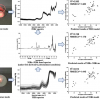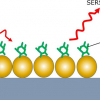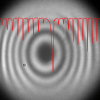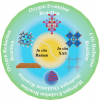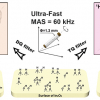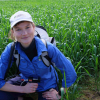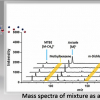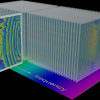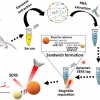Spectroscopy News
The fusion reflectance and transmission NIR spectra can improve predictions of the three main components of rice flour.
Wasatch Photonics and Nikalyte Ltd have announced a partnership to facilitate evaluation and testing of a novel surface-enhanced Raman spectroscopy (SERS) substrate for trace detection of materials.
Dr Christoph Mätzig, who is moving within the AMETEK Group and has taken over the management of the Ultra Precision Technologies division, will be succeeded by Michael Privik.
A team at the University of Oxford has developed a new type of blood test, using NMR metabolomics, that can be used to detect a range of cancers and whether these cancers have metastasised in the body.
Quantum mechanically entangled light particles allow a glimpse into previously invisible wavelength ranges, thus bringing about new possibilities for imaging techniques, microscopy and spectroscopy.
In situ Raman and X-ray absorption spectroscopy can track the dynamic catalytic processes, capture the short-lived intermediates and reveal reactive sites.
A new test for prostate cancer using Raman spectroscopy could be “pivotal” in providing more accurate diagnosis, easing the suffering of patients and saving lives.
A new X-ray technique developed at Cornell offers an unprecedented look at the elaborate inner workings of batteries while they are in use, and is already yielding important findings for the development of next-generation energy storage.
A research team from the Dalian Institute of Chemical Physics has unravelled the surface hydroxyl network on In2O3 nanoparticles with high-field ultrafast magic angle spinning nuclear magnetic resonance spectroscopy.
Scientists from Russia and France have won a grant from the Russian Ministry of Science and Higher Education for international research groups. Together they are designing a new approach to analysing which gases in the atmosphere using terahertz spectroscopy and AI.
The First Student meeting of the Coblentz Society and NE & NY Society for Applied Spectroscopy (SAS) Sections invites submissions from PhD students from across the world working in all fields of vibrational spectroscopy.
A predictive model based on magnetic resonance spectroscopy can detect lung cancer from alterations in blood metabolites. The discovery paves the way for early-stage lung cancer screening, which may dramatically improve survival rates.
University of Adelaide scientists have developed a new mid-infrared spectroscopy method to detect and measure very low concentrations of agricultural lime in soils.
Researchers from the Chinese Academy of Sciences have discovered a new ionisation phenomenon known as triboionisation in a discontinuous atmospheric pressure interface (DAPI).
Scientists at the Max-Planck Institute of Quantum Optics have moved holography forward by implementing it with optical frequency combs.
The two foods both derive from duck livers, and are similar in overall structure and their differing fat distribution, as determined by CARS, provides a window into how fat affects texture.
A novel biosensor based on aptamer-combined surface-enhanced Raman spectroscopy (SERS) has been developed to detect inflammatory microRNA-122 (miR-122) in cell-secreted exosomes.
The first demonstration of direct fs-pulse emission from a quantum cascade laser in the mid-infrared region paves the path towards novel applications of ultrashort laser pulses.
Dr Ellen Adams aims to use the latest terahertz technologies to decipher biophysical processes of interfaces in the cell interior in her new role in Dresden.
Sir Martin Wood, founder of Oxford Instruments died on 23 November at the age of 94 after a short illness.

